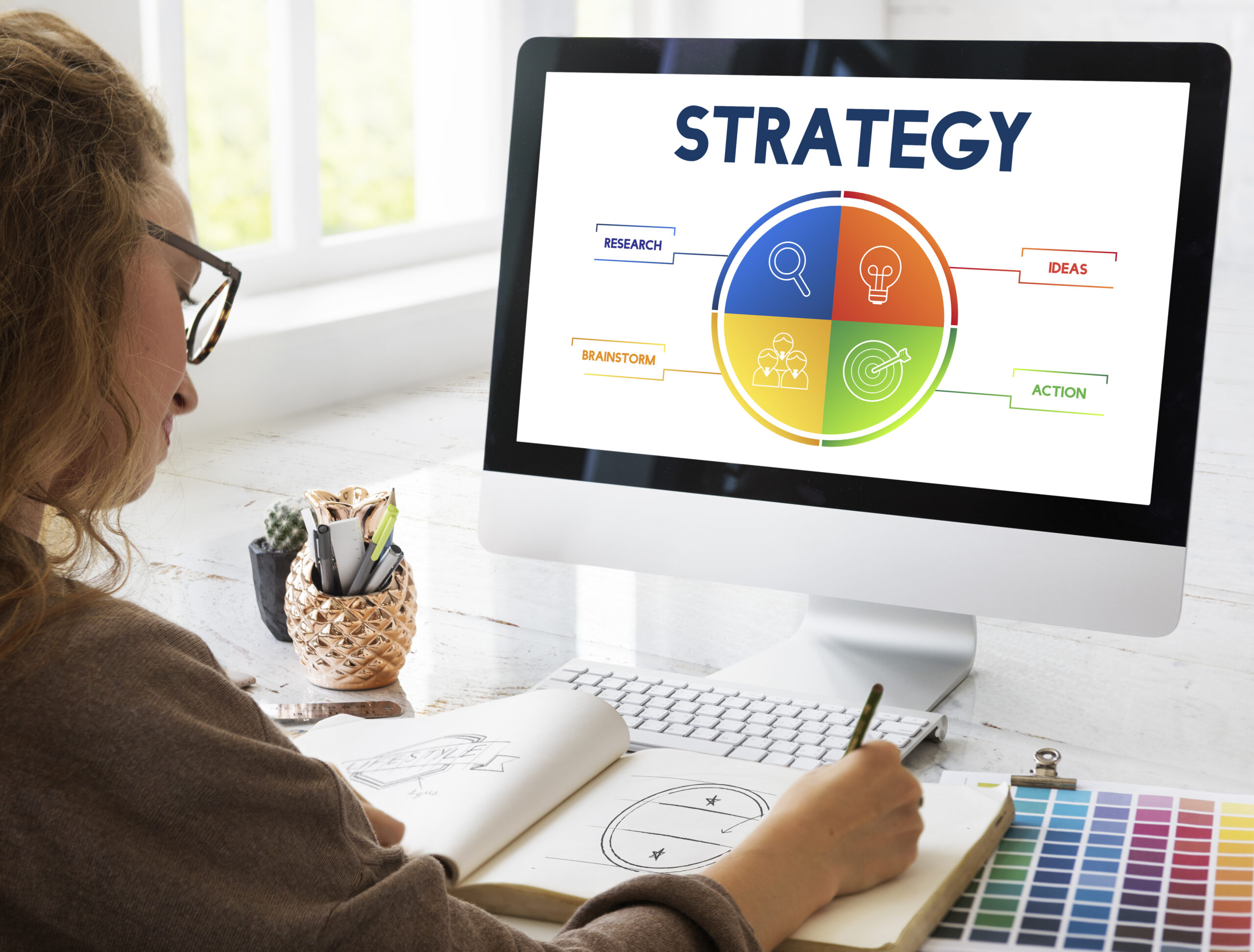Did you know that businesses that implement marketing automation experience an average of a 20% increase in sales opportunities?
A successful marketing automation strategy requires careful planning, optimization, implementation, optimization, and data analysis. This blog will explore the key steps to creating the right strategy for your business.
Let’s get to the practical tips and step-by-step guide to help you create a successful marketing automation strategy.
What is a marketing automation strategy?
A marketing automation strategy leverages software to automate repetitive marketing tasks, streamline marketing processes, and optimize campaigns.
This approach allows businesses to deliver personalized content to customers at each journey stage, enhancing efficiency, revenue, and customer loyalty. It also increases efficiency, customer engagement, lead generation, and ROI.
Implementing a cohesive marketing automation strategy is crucial for analyzing analytics, addressing challenges, and effectively leveraging marketing automation tools.
Overall, a marketing automation strategy helps businesses to scale their marketing efforts and improve outcomes while reducing manual effort and errors.
Business impact of an effective marketing automation strategy
An effective marketing automation strategy has the potential to significantly transform a business's approach to customer engagement and lead generation, especially within the SaaS industry.
Leveraging marketing automation tools and technologies can help companies streamline their marketing processes, enhance efficiency, and drive revenue growth with better marketing automation services.
Here are five key points highlighting the business impact of an effective marketing automation strategy in the B2B SaaS industry:.
- Enhanced Lead Nurturing: Marketing automation enables businesses to engage with leads at various sales funnel stages.
- Optimized Resource Utilization: By automating repetitive marketing tasks such as email campaigns, social media scheduling, and lead scoring, companies can save valuable time and allocate their resources more efficiently.
- Improved Customer Segmentation: Marketing automation software allows businesses to segment their audience based on various criteria such as demographics, behavior, or purchase history.
- Heightened Personalization: Personalization fosters a deeper connection with customers. Businesses can deliver highly personalized content to their customers based on their preferences, behavior, and stages in the buyer's journey.
- Increased ROI: By automating marketing processes, businesses can achieve higher efficiency, reduce manual errors, and optimize their marketing campaigns.
In conclusion, an effective marketing automation strategy holds immense potential for businesses in the SaaS industry. By embracing marketing automation, businesses can position themselves as industry leaders and drive significant growth in the competitive B2B SaaS market.
Let’s break through your revenue hurdles
We find your primary growth blockers, build expert-led strategies, and provide custom data-driven solutions to help you hit your revenue goals.
Step-by-step guide to creating a successful marketing automation strategy

This step-by-step guide will help you create an effective strategy and leverage marketing automation services to streamline your marketing operations, improve customer engagement, and drive higher conversions.
Step 1: Define goals & objectives to identify the target audience
Begin by defining clear goals for your marketing automation strategy that align with your overall business objectives and marketing efforts.
- If you aim to increase lead generation, improve customer retention, or boost sales, specific, measurable, achievable, relevant, and time-bound (SMART) goals provide a solid foundation for your strategy.
- Identifying your
- is equally important.
- Conduct market research and analyze customer data to understand your audience’s demographics, behaviors, preferences, and pain points.
This data-driven approach ensures your campaigns are targeted and resonate with your audience, driving higher engagement and conversion rates.
Step 2: Choose the right marketing automation software
Selecting the right marketing automation platform for lead generation is crucial to achieving your goals. Consider features, functionality, integration capabilities, ease of use, and cost.
10 most popular marketing automation platforms include:
- HubSpot: Known for its robust CRM and marketing automation capabilities, Hubspot offers tools for email marketing, social media management, and lead nurturing.
- Adobe Marketo Engage: Ideal for large enterprises, Marketo offers advanced features for email marketing, customer segmentation, and analytics.
- Salesforce Marketing Cloud: Provides comprehensive solutions for email marketing, social media advertising, and customer journey mapping. Enterprises majorly use Salesforce .
- Oracle Eloqua: Oracle focuses on lead management, marketing analytics, and multichannel campaign management.
- ActiveCampaign: This tool offers a user-friendly interface with features for email marketing, marketing automation, and CRM. ActiveCampaign is great for customization and user journey mapping.
- Keap (formerly Infusionsoft): Designed for small businesses, Keap offers email marketing, CRM, and sales automation tools.
- GetResponse: Known for its email marketing , landing pages, and webinar solutions.
- Customer.io: Messaging automation and customer segmentation are the major focus of Customer.io .
- Dynamics 365 Marketing: Integrated with Microsoft’s ecosystem, Dynamics 365 offers tools for email marketing, lead nurturing, and event management.
- Act-On: Providing comprehensive marketing automation solutions for email marketing, lead management, and analytics, Act-on is a great tool for automating marketing activities. .
These platforms are essential for creating and optimizing marketing campaigns.
Step 3: Map out your customer journey
Creating a customer journey map is essential for understanding all customer interactions and touchpoints with your brand.
This visual representation helps you identify opportunities to deliver personalized, omnichannel experiences, build trust and loyalty, and foster strong customer relationships.
Key stages in a typical customer journey include:
- Awareness: When customers first become aware of your brand or product.
- Consideration: When customers are evaluating different options and considering a purchase.
- Decision: When customers decide to purchase your product or service.
- Retention: When efforts are made to retain customers and encourage repeat purchases.
- Advocacy: When satisfied customers become advocates and refer others to your brand.
Use marketing automation to engage customers with welcome emails, personalized product recommendations, and surveys while tracking attribution for optimized strategy.
Step 4: Deliver personalized content
Personalization is key to effective marketing automation. Use customer data to segment your audience and deliver personalized content that resonates with each segment.
Marketing automation tools can analyze data to enhance customer profiles and generate dynamic content, ensuring relevance and engagement at each customer journey stage.
Types of personalized content include:
- Email Marketing: With email marketing automation , send personalized emails based on customer behavior, preferences, and purchase history.
- Dynamic Website Content: Display different content on your website based on the visitor’s profile and behavior.
- Social Media Advertising: Target specific audience segments with tailored paid ads .
- Product Recommendations: Suggest products based on past purchases and browsing behavior.
This collaboration between sales and marketing teams bridges the gap, optimizing campaign expenditures and accelerating the generation of marketing-qualified leads.
Step 5: Set up automated workflows
Implementing automated workflows is essential for delivering timely, targeted messages and ensuring quality leads are passed to the sales team. Common workflows include:
- Customer Onboarding: Welcome new customers with a series of emails that introduce your brand and products.
- Abandoned Cart Reminders: Send reminders to customers who have added items to their cart but haven’t completed the purchase.
- Lead Nurturing: Engage leads with educational and promotional emails to move them through the sales funnel.
- Upsell and Cross-Sell Campaigns: Suggest additional products or services based on previous purchases.
- Win-Back Campaigns: Re-engage inactive customers with special offers or incentives.
Each workflow should be designed to achieve specific objectives and provide value to the customer at each stage of their journey.
Step 6: Measure and analyze campaign results
Continuous measurement and analysis of your campaigns are crucial for optimizing your marketing and automation strategies. Use analytics tools to track key metrics such as:
- Open Rates: The percentage of recipients who open your emails.
- Click-Through Rates (CTR): The percentage of recipients clicking links within your emails.
- Conversion Rates: The percentage of recipients who take the desired action, such as purchasing or filling out a form.
- Bounce Rates: The percentage of emails that couldn’t be delivered to the recipient’s inbox.
- Unsubscribe Rates: The percentage of recipients who opt out of your email list.
- Return on Investment (ROI): The overall profitability of your marketing automation campaigns.
Use these insights to identify what’s working and what isn’t and make data-driven decisions to improve your strategy.
Turn website into high paying customers
We drive business growth by optimizing every inbound channel to attract and convert high-quality clients for you
Challenges of Marketing Automation
While marketing automation offers numerous benefits, it also comes with challenges, including:
- Maintaining Data Quality: Ensure your customer data is accurate, complete, and up-to-date to avoid sending irrelevant or duplicate messages.
- Integrating with Other Software: Seamless integration with your existing CRM, CMS, and other tools is essential for effective automation.
- Balancing Automation and Human Touch: While automation can handle repetitive tasks, it’s important to maintain a human touch in your interactions to build genuine relationships with customers.
- Avoiding Over-Communication: Be mindful of the frequency and volume of your communications to avoid overwhelming your customers and causing them to unsubscribe.
- Segmenting Your Audience Appropriately: Proper segmentation is key to delivering relevant content and achieving better engagement and conversion rates.
Conclusion
By addressing these challenges and continuously optimizing your strategy, you can leverage marketing automation to its full potential and drive sustainable business growth.
Implementing effective marketing automation strategies can help drive revenue growth, improve customer loyalty, and nurture customers throughout the sales journey.
Outshine Your Competition Faster
Related Blogs
We explore and publish the latest & most underrated content before it becomes a trend.

Subscribe to Saffron Edge Newsletter!

Outshine Your Competition Faster









